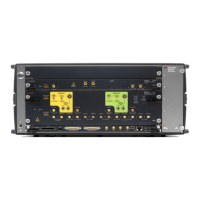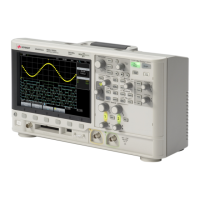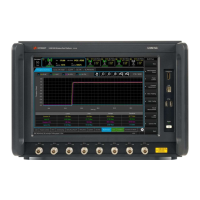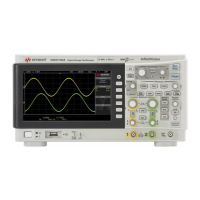Keysight M8000 Series of BER Test Solutions User Guide 509
Working with Measurements 8
Jitter tolerance can be measured by applying a distorted data signal to the
DUT and measuring the resulting bit error ratio. To make jitter tolerance
tests reproducible, the signal distortion must also be reproducible. This
requires some definitions.
Jitter
Receivers react differently on
• different types of jitter
• the jitter composition
• the jitter frequency spectrum
• the combination of jitter frequencies and data rate
Various test standards specify the jitter composition to be used for jitter
tolerance tests.
The M8020A/M8030A provides the following means for generating
artificial (reproducible) jitter:
• Two types of voltage-controlled signal delay lines
• A phase shifter for modulating the generated clock
Intersymbol Interference
Conductors on PC boards have a limited bandwidth. This causes
intersymbol interference which changes the shape of the received eye
opening. The eye becomes asymmetrical.
Level Noise
Level noise affects the voltage amplitude of the eye opening.
PLL Performance Test Testing a PLL (or CDR) is not complete until the
entire frequency range of the PLL has been checked under worst-case
conditions.
For this purpose, the M8020A/M8030A provides the Jitter Tolerance
Characterization measurement.
PLL Standards and Compliance Tests
The Optical Internetworking Forum (OIF) as well as other institutions have
proposed standards for testing the performance of data receivers and
receiver circuits in the presence of jitter.
For this purpose, the M8020A/M8030A provides the Jitter Tolerance
Compliance measurement.

